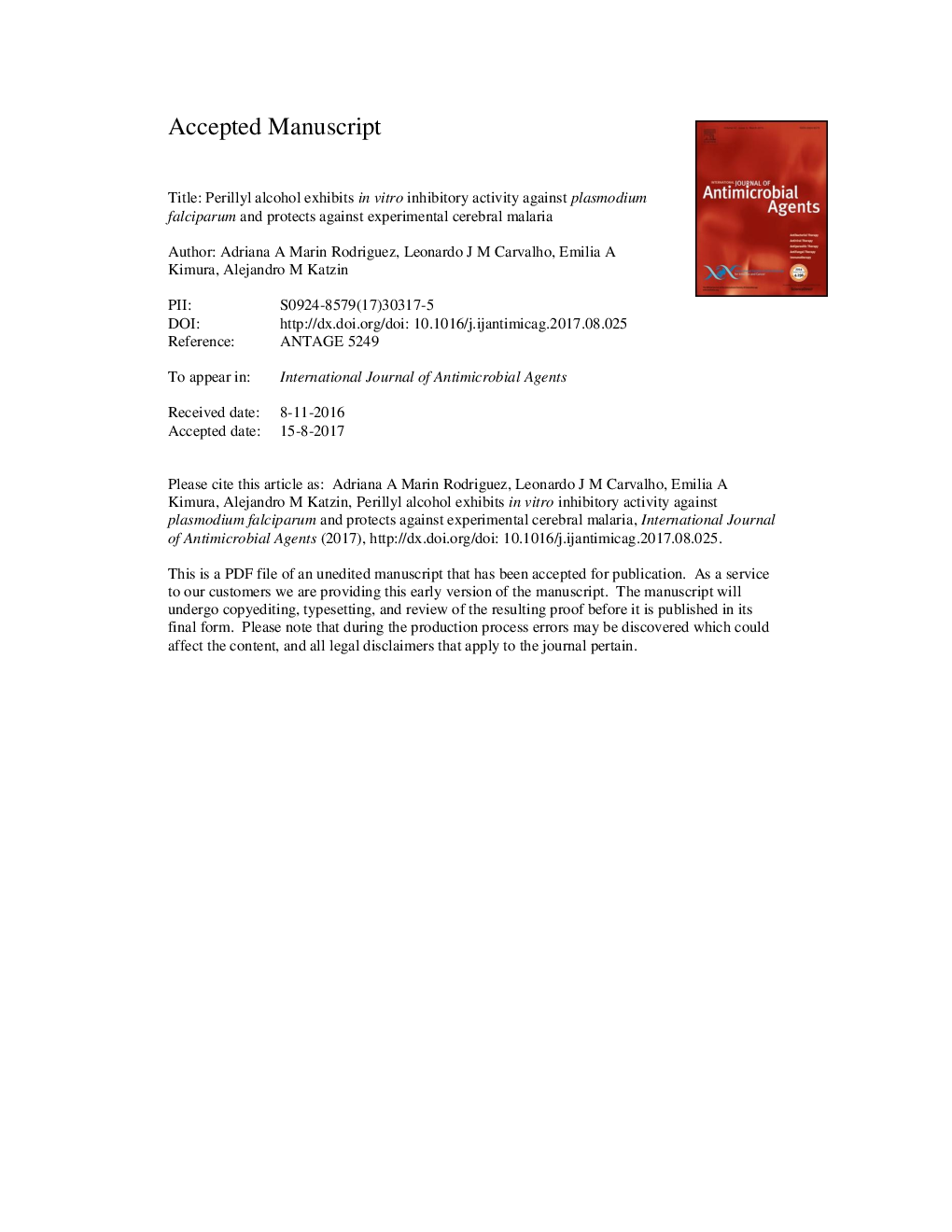| Article ID | Journal | Published Year | Pages | File Type |
|---|---|---|---|---|
| 8738615 | International Journal of Antimicrobial Agents | 2018 | 26 Pages |
Abstract
The development of new drugs is one of the strategies to control malaria. Isoprenoid biosynthesis in Plasmodium falciparum is an essential pathway for parasite survival, and is therefore a potential target for new antimalarial drugs. Indeed, plant-derived secondary metabolites, such as terpenes, exhibit antimalarial activity in vitro by inhibiting isoprenoid biosynthesis in P. falciparum. In this study, the in vitro antiplasmodial activity of perillyl alcohol (POH) was evaluated, along with its in vitro toxicity and its effect on the isoprenylation process. In addition, the efficacy of intranasally administered POH in preventing Plasmodium berghei ANKA-induced experimental cerebral malaria (ECM) was determined. The 50% inhibitory concentrations of POH for 3D7 and K1 P. falciparum were 4.8âµM and 10.4âµM, respectively. POH inhibited farnesylation of 20-37âkDa proteins in P. falciparum (3D7), but no toxic effects in Vero cells were observed. A 500âmg/kg/d dose of POH had no effect on P. berghei ANKA parasitaemia, but showed marked efficacy in preventing ECM development (70% survival compared with 30% for untreated animals). This effect was associated with the downregulation of cerebrovascular inflammation and damage, with marked decreases in brain leucocyte accumulation and the incidence of brain microhaemorrhage. POH also downregulated interleukin (IL)-10, IL-6, tumour necrosis factor-α, interferon-γ, IL-12 and monocyte chemoattractant protein-1 levels in the brain and spleen. In conclusion, POH shows antiplasmodial activity in vitro and, despite there being no evidence of antiplasmodial activity in vivo following intranasal administration, POH prevented cerebrovascular inflammation/damage and expression of pro-inflammatory cytokines.
Keywords
IC50i.pCBAECMPlasmodium berghei ANKAMEPMACSGFPPRBCsLD50POH2-C-Methyl-d-erythritol-4-phosphatePBA3-(4,5-dimethylthiazol-2-yl)-2,5-diphenyltetrazolium bromide50% inhibitory concentration50% lethal doseH&EMTTcytometric bead arraysodium dodecyl sulphate-polyacrylamide gel electrophoresisSDS-PAGEperillyl alcoholProtein isoprenylationTerpenesIntraperitoneallyCNSCytokinescentral nervous systemselectivity indexexperimental cerebral malariahaematoxylin-eosingreen fluorescent proteinPlasmodium falciparumoptical density
Related Topics
Life Sciences
Immunology and Microbiology
Applied Microbiology and Biotechnology
Authors
Adriana A. Marin Rodriguez, Leonardo J.M. Carvalho, Emilia A. Kimura, Alejandro M. Katzin,
